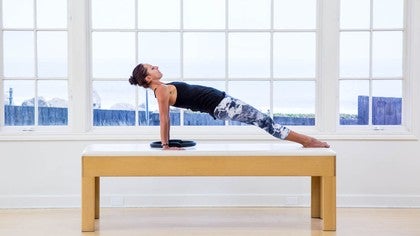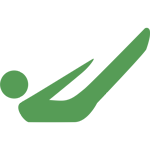
Unpacking the Pilates Legacy: Joseph Pilates, the First-Generation Teachers, and the Evolution of Contrology
Many people know Pilates for its challenging exercises and focus on core strength. Behind the movements lies a rich history, a story of innovation, and a legacy carried forward by a remarkable group of individuals. It's more than just a workout; it's a practice originally called "Contrology," crafted by a visionary, Joseph Pilates, and shaped by by the students who learned directly from him.
For those interested in exploring beyond contemporary fitness trends, the Pilates Anytime Legacy Project is our Pilates time machine, taking us back to the roots of the method.
The Joseph Pilates Story
Joseph Pilates (born in Germany in 1883) wasn't always the picture of vitality we see in old photos. He battled asthma, rickets, and rheumatic fever as a child. Instead of letting it define him, he dedicated his life to becoming stronger. Inspired by his gymnast father and naturopath mother, he dove into everything from gymnastics and bodybuilding to martial arts and yoga.
His core idea was that modern life – poor posture, inefficient breathing, the disconnect between mind and body – negatively impacted health. He called his solution Contrology: the complete coordination of body, mind, and spirit, achieved through conscious control over every movement.
A pivotal period for the method's development occurred during World War I. Interned in England as a German national, Pilates refined his exercises by teaching fellow internees. While working in the camp hospital, he allegedly attached bed springs to posts, creating resistance apparatus that allowed bedridden patients to exercise. Legend has it that this innovation laid the groundwork for signature Pilates equipment like the Reformer and Cadillac (we cannot confirm that this is true, but it's a good story).
The Core Principles: The Foundation of Pilates
Joseph Pilates' movement practice, built on key principles, explored in more depth in this blog on the Benefits of Pilates, including:
- Breath: Fundamental for oxygenating the blood and facilitating controlled movement.
- Concentration: Requiring intense mental focus on the quality and intention of each movement.
- Centering: Emphasizing the body's core, or "Powerhouse," as the origin of stable, integrated movement.
- Control: Highlighting deliberate, conscious muscular command throughout every exercise.
- Precision: Focusing on executing movements with exactness for maximum benefit.
- Flow: Aiming for smooth, graceful, and efficient transitions between exercises.
Foundational Texts: Reading Joe's Words
Joseph Pilates documented his ideas in two main books: Your Health (1934) and the seminal Return to Life Through Contrology (1945). While Your Health introduced his early concepts, Return to Life is considered the definitive guide to his Mat work. In it, he passionately argued that "civilization impairs physical fitness" and offered Contrology as the remedy. He defined fitness holistically: achieving a uniformly developed body and a sound mind capable of performing daily tasks with "spontaneous zest and pleasure.”
Return to Life meticulously details his original 34 Mat exercises, complete with instructions and photos of Joe himself demonstrating. This sequence forms the bedrock of classical Pilates Mat work, emphasizing posture, breathing, and spinal flexibility. These texts remain vital for understanding his original intent.
Meet the First-Generation of Pilates Teachers
When Joseph Pilates passed away in 1967, he didn't leave a formal succession plan. The future of his work rested on the shoulders of his most dedicated students, as some have come to know as the "Pilates Elders,” or First-Generation Teachers. Many came from the world of dance, drawn to the method's power for strength and rehabilitation after finding his New York City studio, often alongside his wife and teaching partner, Clara.
These teachers didn't just copy Joe; they interpreted, adapted, and sometimes innovated, leading to the diverse styles we see today. The Legacy Project features the invaluable contributions of figures such as:
Click the links above to learn more about each teacher.
Classical and Contemporary Approaches
While Classical and Contemporary discussions require their own exploration, for the purposes of this post, the first generation teachers inspired their own legacies that have led to the "Classical" vs. "Contemporary" approaches prevalent today.
-
Classical: Classical Pilates typically refers to an approach that aims to adhere as closely as possible to the system taught by Joseph Pilates. This generally involves utilizing his original exercises (particularly the 34 Mat exercises from Return to Life and established apparatus repertoire), maintaining his intended sequence and flow where applicable, using apparatus built to his specifications, and upholding his core principles. The lineage tracing back through Romana Kryzanowska is most frequently associated with this definition, though even Romana made some changes to the system (such as adding Side to Side on the Short Box as an intermediary exercise). She also created levels in the system for added safety.
-
Contemporary: Contemporary Pilates is a broad category encompassing styles that have modified or evolved the original work. Contemporary approaches might alter exercises based on modern biomechanical principles, introduce new exercises or variations, add props, utilize updated or different apparatus designs, de-emphasize strict sequencing, or integrate concepts from other movement disciplines or therapeutic modalities.
The debate between these perspectives is complex and ongoing within the Pilates community. Plus, a new controversy has arisen amongst both Classical and Contemporary teachers, some who feel that the term “Pilates” is too loosely associated with fitness on machines resembling Pilates Reformers, but without applying Pilates principles. Suffice it to say for now, Pilates is evolving!
Your Window into History: The Pilates Anytime Legacy Project
This brings us back to the Pilates Anytime Legacy Project. It's an extensive online library included with a Pilates Anytime subscription, designed to preserve and share this rich history. It serves as a personal archive offering:
- First-Generation Teacher Biographies: Documentary-style films exploring their lives.
- Method Explanations: Insights from their students (or archival footage!) explaining unique approaches.
- Style Experiences: Classes taught in the spirit of each Pilates lineage.
- Historical Context: Interviews about Pilates history, equipment evolution (like Balanced Body founder Ken Endelman), and key moments like the trademark lawsuit.
Connect with the True Legacy
Pilates is more than a fitness trend. It's a method born from resilience, refined through dedication, and passed down through generations of passionate teachers. Exploring its history reveals a fascinating evolution and a diverse tapestry of approaches, all stemming from Joseph Pilates' original vision of Contrology.
Those interested can explore resources like the Pilates Anytime Legacy Project to dive into the stories, experience the different styles, and connect with the authentic roots of this enduring practice.
Generated by AI | Edited by Chanda HinmanComments
No comments yet. Be the first!









You need to be a subscriber to post a comment.
Please Log In or Create an Account to start your free trial.